10 Great Places to Live
We found ten small to midsize cities with good jobs, affordable homes and plenty to do indoors and out.
What makes a city a great place to live? By our definition: good jobs, reasonably priced homes (see mortgage rates in your area), decent schools, great health care and manageable size are all part of the mix. We started with metro areas that have a population of 1 million or less and came up with a list of cities that met those criteria. Then we whittled the list to ten cities and sent Kiplinger's reporters to each one to find the ingredients that make them special: say, a gorgeous setting, a green sensibility, a brainiac population or a rah-rah sports culture. Want to see a moose on your daily walk? Live in Anchorage. Rub elbows with celebrities? Santa Fe's the place. Billings has an Old West vibe; Dubuque, the Mississippi; and Little Rock, our number-one pick, has something for everyone.
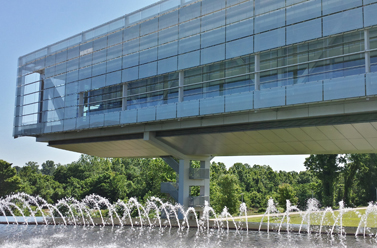
The William J. Clinton Presidential Library in Little Rock. Courtesy of Cameron Huddleston
That community includes people of all ages. Residents fill the streets of the eclectic Hillcrest neighborhood to mingle, shop and listen to street music on the first Thursday of each month. Young professionals meet with leaders of major companies as part of Create Little Rock, a networking program. Retirees stay active by volunteering, as 80-year-old Bob Gee does for the Clinton School of Public Service. "There is something here to catch the interest of almost anybody," Gee says.

Sign up for Kiplinger’s Free E-Newsletters
Profit and prosper with the best of expert advice on investing, taxes, retirement, personal finance and more - straight to your e-mail.
Profit and prosper with the best of expert advice - straight to your e-mail.
Thanks to its location, Little Rock provides plenty of opportunities for hiking, running, cycling, boating, fishing and hunting. Among the many cultural offerings: museums and fine art galleries, a repertory theater, a symphony orchestra, and a performing arts center. Downtown, you can roam the 33-acre Riverfront Park or enjoy eateries ranging from food trucks to fine dining. The William J. Clinton Presidential Library brings in speakers from around the world.
Little Rock employers include the state government, two major universities, Windstream Communications (a telecommunications company), Caterpillar and IT company Acxiom. At 6.6%, the unemployment rate is below the national average (currently 7.6%). Housing costs are below the national average as well. You can find a three-bedroom, 2,000-square-foot house for as little as $169,900 in a family-friendly neighborhood in West Little Rock. And residents can get first-rate medical care at several hospitals and the University of Arkansas for Medical Sciences, a world-class center for treating multiple myeloma.
Little Rock Central High School -- the site of desegregation battles in 1957 -- is now a top-ranked high school, but the city also has its share of underperforming public schools. Mayor Mark Stodola has introduced several initiatives to help improve those schools.
What the locals love: The annual Riverfest performing arts celebration, the paved trail system along the Arkansas River, the mild winters and the lack of traffic. You can get from one side of town to the other in less than 20 minutes. Follow #kipcities on Twitter to see what else there is to love about Little Rock.
2. Burlington, Vermont
On the eastern shore of Lake Champlain, Burlington boasts a cozy feel and stunning beauty, plus a vibrant and varied economy. Eds and meds are big -- the city is home to the University of Vermont and regional health care provider Fletcher Allen. IBM is nearby and other tech companies are growing, too. Champlain College's programs in digital technology have led to start-ups, and Dealer.com, which provides software for auto dealers, plans to add 200 jobs annually for the next three years. Result? Plentiful jobs. Unemployment is just 3.5%.
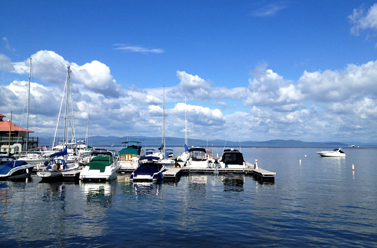
Green is important in the Green Mountain State: Burlington claims the first utility in the country to focus on energy efficiency in the community. Eco-friendly product maker Seventh Generation, solar companies Draker and AllEarth Renewables, and wind supplier NRG Systems round out the area's green offerings. Mayor Miro Weinberger says the goal is to power the city fully with renewable energy -- and Burlington isn't that far off. Even local brewer Magic Hat converts by-products into methane gas to generate one-third of the brewery's electricity.
The city has a penchant for creative problem-solving. In the 1970s, as downtowns across the nation were dying, Burlington created the Church Street Marketplace. One of the most successful pedestrian malls in the country, its mix of boutiques and eateries keeps locals coming downtown. Ten years ago, two inner-city schools were failing. The city turned both into magnet schools, one for the arts and the other concentrating on sustainability, and now both of them are highly sought-after.
Tucked between the Adirondacks and the Green Mountains, Burlington boasts stellar vistas year-round. In warm weather, residents enjoy hiking and biking -- an eight-mile bike path runs along the lake. As for the winter, yes, it's cold (the average temperature in January is 19 degrees), but you're just half an hour from the ski slopes. For $330,000, the average price of a single-family home, you can buy a spacious three-bedroom house with a big yard in the New North End or a more modest home in the South End.
What the locals love: Farm-to-table food at spots such as the Farmhouse Tap & Grill and Skinny Pancake creperie, easy access to ski slopes, and spectacular views. Follow #kipcities on Twitter to see what else there is to love about Burlington.
3. Bryan-College Station, Texas
College Station and the adjoining Bryan, together known as Aggieland, represent a cultural, economic and educational powerhouse in the bucolic southeastern part of the state.
Brimming with Texas hospitality and steeped in tradition, the cities attract and retain college students, young professionals, families and retirees with their highly educated workforce, exemplary public school systems, low crime, 1,800 acres of parks and golf courses, excellent hospitals and an affordable cost of living. The performing arts add to the region’s cultural landscape. And have we mentioned college sports? Suffice it to say, they're big in Aggieland.
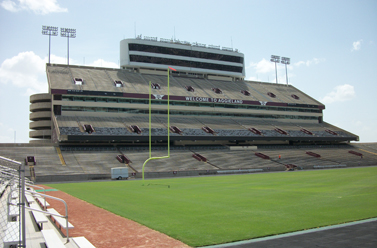
The main driver of all this energy is Texas A&M University, whose research facilities provide business opportunities to the region and jobs to graduates who stay in Aggieland. Big-tech firms have moved into the area: Motorola recently tapped A&M as one of eight universities (including Caltech, Harvard and MIT) for a research partnership. The federal government has made its presence known as well. Last year, the A&M System received a $286 million contract for a federal center that, in part, develops vaccines against influenza. The area expects to add 1,000 jobs in the next five years.
Bordering Bryan, the biomedical corridor has boosted the economy, allowing the city to renovate landmarks and add retail and restaurants. A three-bedroom home in Bryan runs $153,000, on average; in College Station, it's $165,000.
Aggies young and old are passionate about their football. A $450 million renovation of the 86-year-old Kyle Field will bring the total number of seats to 102,500, making it the biggest stadium in the Southeastern Conference, which A&M joined last year. Conference membership is expected to add $120 million to the local economy each season.
The region has its challenges. Summers can be brutal. And game-day traffic can give even the most avid Aggies a Texas-size headache.
What the locals love: Guest lectures at the George Bush Presidential Library and Museum; hiking, fishing, horseback riding and ranching; and, of course, college football. Follow #kipcities on Twitter to see what else there is to love about Bryan-College Station.
[page break]
4. Santa Fe, New Mexico
Wander among the pueblo-style structures of Santa Fe’s downtown on a sunny day (and what day isn't?) and you'll see why residents happily call this city home. Craftspeople spread their wares outside the 400-year-old Palace of the Governors, once Spain's seat of government in the Southwest and now part of the New Mexico History Museum. Nearby, restaurants such as The Shed serve dishes reflecting the Spanish and Native American influence -- and smothered in fresh red or green chile sauce. To the southeast, fine-art galleries line Canyon Road.
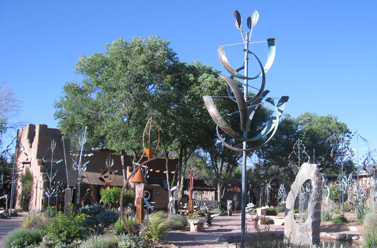
Culture is literally in the air in Santa Fe. There are free outdoor concerts at the central plaza bandstand all summer long, and six miles from the heart of town the spectacular outdoor amphitheater enthralls opera-goers. Outdoor enthusiasts can hit the hiking and biking trails that run through the surrounding terrain or head to the ski slopes at the Sangre de Cristo Mountains, about a half-hour drive from downtown. Getting around sections of downtown, at least on foot, is more of a challenge: To encourage walking, efforts are under way to improve sidewalks and clean up the areas between popular attractions.
Tourism, the state government and the nearby Los Alamos National Laboratory dominate Santa Fe's economy (the unemployment rate is 5%); the health care sector is expected to grow as the percentage of people older than 65 increases. To further diversify the economy -- and encourage young people to stick around -- the city fosters entrepreneurship, especially in areas such as green technology and media, and supports start-ups through the Santa Fe Business Incubator. The TV-and-film industry has blossomed in the region; Charlize Theron was recently spotted around town, and other celebrities regularly show up.
Santa Fe's cost of living is a little higher than in other parts of the state. For a three-bedroom home in the Casa Solana neighborhood, prices start at about $240,000 to $300,000. New houses must meet the city’s green building code, enacted to conserve the area’s limited water resources and save energy.
Many of the public schools are underperformers, so some families choose to live in districts with better schools or send kids to one of 43 private schools in Santa Fe County.
What the locals love: The diversity, the climate and the free "Music on the Hill" concert series, which features jazz performers on Wednesday evenings in the summer. Follow #kipcities on Twitter to see what else there is to love about Sante Fe.
5. Columbia, South Carolina
Surrounded by towering pines and bursting with hospitality, Columbia is as sweet as the area’s ever-present tea, thanks to the diversified economy, family-friendly atmosphere and central location.
As the state capital and home to Fort Jackson, the largest military training base in the country, Columbia has plenty of government jobs. It also boasts six colleges, including the flagship University of South Carolina -- you'll find Gamecocks spirit wherever you go. Manufacturing and insurance companies add to the mix. Seven major hospitals provide both jobs and top-notch medical care. Columbia’s balanced approach has yielded robust growth in the past few years; unemployment is 6.9%.
Set halfway between the mountains and the Atlantic and within two hours of Charlotte and Charleston, Columbia's location is a big draw. But the city has its own attractions, including an art museum, a children's museum and Riverbanks Zoo, rated one of the top ten in the country. Three rivers converge downtown, so a bike ride along Riverwalk or an afternoon of tubing is always on the menu, as are boating and water sports on nearby Lake Murray. Although the city lives up to its motto, "famously hot," in August, annual temperatures average a moderate 65 degrees.
Reasonably priced housing and good schools (including some that are tops in the state) make the Columbia area ideal for families. A three-bedroom, two-bath home in the leafy Shandon neighborhood averages $250,000.
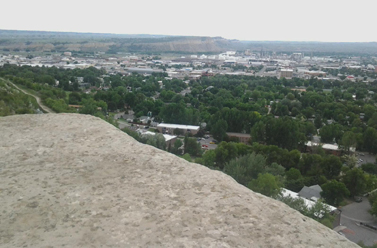
Billings is a regional economic hub with low unemployment. Courtesy of Susannah Snider
Downtown is a work in progress as the city rehabs abandoned buildings and transforms lots into pocket parks and living spaces. Folks from neighboring communities come for the shopping (Scheels, a sporting-goods store slated for completion in 2014, will include, of all things, a Ferris wheel) and to dine at the breweries and quiet bistros along Montana Avenue.
Winters? Locals insist that they live in the "banana belt," a balmy spot surrounded by a cold region. Thanks to sudden temperature swings, you can be shoveling the walkway before breakfast and golfing after lunch. The landscape looks like the set of a spaghetti Western, with steep sandstone rock faces, dusty paths (rattlesnake alert) and the rushing Yellowstone River. When locals aren't kayaking the river or biking along the rimrocks, they're gathering at Dehler Park to cheer the Billings Mustangs, a farm team for the Cincinnati Reds.
Housing ranges from the historic homes along Clark Avenue to the new community of Josephine Crossing, where a three-bedroom home starts at about $200,000. Billings lacks a sales tax to fund public projects, but a recent $2.3 million levy will help reduce overcrowding in the schools and update classroom technology.
What the locals love: The romantic Cafe Italia and breweries on Montana Avenue (and everything outdoorsy). Plus, visiting the Western Heritage Center for kid-friendly programs about Billings's history. Follow #kipcities on Twitter to see what else there is to love about Billings.
[page break]
7. Morgantown, West Virginia
Call it the city bad times forgot. Between 2008 and 2010, Morgantown, nestled in the mountains of north-central West Virginia, was one of the few metropolitan areas that saw job and income growth, thanks mostly to Mylan Pharmaceuticals, a leading manufacturer of generic drugs, and West Virginia University and the WVU Healthcare system. At 4.2%, the unemployment rate is well below the national average.
As a college town, Morgantown offers a host of cultural activities, from Broadway shows to art exhibitions. Outdoor recreation is abundant. Locals can head to the Mon River Rail-Trail to run or bike, or drive 13 miles to Coopers Rock State Forest for 50 miles of hiking trails. Unlike much of West Virginia, Morgantown is within a few hours' drive of several major cities, including Pittsburgh and Washington, D.C. Residents don’t need to leave town, though, for good health care. WVU Hospitals are highly rated in specialties including cancer and cardiology.
Housing costs in Morgantown are above-average for West Virginia -- expect to pay $200,000 or more for an updated, three-bedroom house -- but local property taxes are low. Suncrest Primary and Middle schools, Cheat Lake Elementary and Morgantown High School are top-rated.
Living alongside 30,000 college students has its drawbacks. During the school year, traffic through town starts backing up around 2 p.m. Discarded red plastic cups offer forensic evidence of late-night revelries. And if you're not a fan of Mountaineer football, don't tell.
What the locals love: Rowing lessons at the boathouse in the city's Wharf District and dining at one of the outdoor cafés along the Mon River Rail-Trail. Follow #kipcities on Twitter to see what else there is to love about Morgantown.
8. Ithaca, New York
It may be temporary home to 28,000 students, but this college town is also a great place to put down roots.
Education is central to Ithaca's identity. Both Cornell University and Ithaca College are located here; Cornell is the largest employer in the county. Tourists attracted by the more than 100 nearby wineries also contribute to the economy. That combination, plus start-ups fueled by Cornell's brainpower, has sustained Ithaca's economic growth while other upstate communities have fallen on hard times. The unemployment rate is just 5.1%. "We've been growing steadily for the past 100 years," says Mayor Svante Myrick.
On any given Saturday, you'll see locals shopping at the Ithaca Farmers' Market or taking in a performance at one of the local theaters. Residents like to boast that the city has more restaurants per capita than New York City. Ithaca's natural environment -- gorges, waterfalls and Cayuga Lake -- not only inspires the motto "Ithaca Is Gorges" but gives the locals good reason (beyond cabin fever) to head outdoors after Ithaca's long, cold and snowy winters. Hiking, biking and sailing are popular summertime activities.
Downtown Ithaca is being transformed by new mixed-use developments and a hotel expansion; Ithaca Commons, a downtown pedestrian mall full of independent stores, is undergoing a redesign. "It's basically a new city," says Bryan Warren, president of Warren Real Estate.
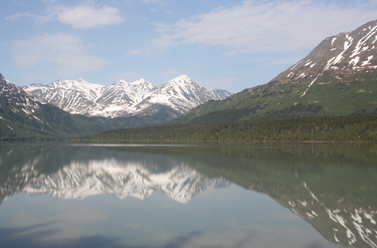
In Anchorage, the mountains transform each spring due to melting ice. Courtesy of Kathy Kristof
But Mother Nature is both magnificent and unforgiving here. Residents must dodge bears and trek carefully through the mudflats that emerge in low tide. (The flats, made of glacial silt, can turn into quicksand.) In winter, when there's just five hours of daylight, the locals use dawn-simulating lamps. "Alaska will test you every day," says Anchorage resident Daniel Zachary Hayes.
The city is also diverse, with nearly 100 languages spoken in the public schools. Parents rave about the schools' small class sizes and innovative curriculum. Cultural facilities include a performing arts center and Cyrano's Off Center Playhouse.
The cost of living and housing is high (the average home price at the end of June was $320,000 to $390,000), but so is the average household income: $74,271. Unemployment is a low 5.1%. Within a ten-hour flight of most major cities, Anchorage is a strategic location for the military and companies such as FedEx. Oil and tourism are also top employers. Oil revenues provide every resident with an annual dividend payment -- $878 in 2012. Property taxes are low, too.
What the locals love: Raising a glass with friends at the Snow Goose bar and attending a Saturday market for local artwork. Follow #kipcities on Twitter to see what else there is to love about Anchorage.
10. Dubuque, Iowa
Thirty years ago, Dubuque was a struggling riverfront town with a failing meatpacking plant, unemployment reaching 23% and a seedy post-industrial waterfront. But the Dubuque of today is a different kind of beast, both physically and economically.
The revived Mississippi riverfront now houses a Smithsonian-affiliated museum and a convention center. Businesses and shops occupy storefronts in the 19th-century downtown. John Deere, a longtime employer, still dominates the job scene, but IBM (a huge "get" in 2009), Prudential Retirement, three private liberal arts colleges, Mercy Medical Center and Mississippi River-based tourism contribute to the robust job market; the unemployment rate is 4.2%.
Housing in Dubuque is affordable: The average single-family home costs $130,000, and house hunters can buy a four-bedroom home in a historic neighborhood for between $199,000 and $275,000. Urbanites seek out the Millwork District, where more than one million square feet of abandoned warehouse space is being converted into shops and lofts. For an exposed-brick two-bedroom unit in the historic Caradco building, you'll pay about $1,000 per month in rent.
Iowa has a tradition of solid public schools, with one of the highest four-year graduation rates in the country, and Dubuque is no exception. As a town with a strong Catholic community, it also has a parochial-school system. Locals spend their free time attending shows and roller-derby matches at the Five Flags Center, cheering on the local hockey team, the Fighting Saints, and biking the Heritage Trail out to Dyersville, where Field of Dreams was filmed.
What the locals love: Enjoying festivals under the Town Clock and watching from Eagle Point Park as barges navigate Lock and Dam #11. Follow #kipcities on Twitter to see what else there is to love about Dubuque.
___________________________________________________________________
The data for this year's top ten cities was compiled and ranked by Kevin Stolarick, of the Martin Prosperity Institute, a think tank that studies economic prosperity. We considered metro areas with a population of 1 million or less and culled the list to ten (Columbia, S.C., is the largest, with a population of 768,821). Our criteria included economic growth (jobs and wages), education (the percentage of the population with a bachelor's degree or higher), housing affordability (cost and regional income levels), doctors per capita, school quality (student-teacher ratio), and cultural and natural amenities. We also considered diversity, as well as the "creative class" (such as writers, educators and engineers), a product of Stolarick's work with Richard Florida, author of "The Rise of the Creative Class."
Get Kiplinger Today newsletter — free
Profit and prosper with the best of Kiplinger's advice on investing, taxes, retirement, personal finance and much more. Delivered daily. Enter your email in the box and click Sign Me Up.
-
 The AI Doctor Coming to Read Your Test Results
The AI Doctor Coming to Read Your Test ResultsThe Kiplinger Letter There’s big opportunity for AI tools that analyze CAT scans, MRIs and other medical images. But there are also big challenges that human clinicians and tech companies will have to overcome.
By John Miley Published
-
 The Best Places for LGBTQ People to Retire Abroad
The Best Places for LGBTQ People to Retire AbroadLGBTQ people can safely retire abroad, but they must know a country’s laws and level of support — going beyond the usual retirement considerations.
By Drew Limsky Published
-
 How to Find Foreclosed Homes: Best Foreclosure Listings Sites
How to Find Foreclosed Homes: Best Foreclosure Listings SitesMaking Your Money Last Find foreclosed homes for sale on these foreclosure listing websites. Search for properties on these free, paid or government sites.
By Bob Niedt Last updated
-
 Luxury Home Prices Rise as the Rich Dodge High Mortgage Rates
Luxury Home Prices Rise as the Rich Dodge High Mortgage RatesLuxury home prices rose 9% to the highest third-quarter level on record, Redfin reports, growing nearly three times faster than non-luxury prices.
By Kathryn Pomroy Published
-
 Four Tips for Renting Out Your Home on Airbnb
Four Tips for Renting Out Your Home on Airbnbreal estate Here's what you should know before listing your home on Airbnb.
By Miriam Cross Published
-
 Five Ways to Shop for a Low Mortgage Rate
Five Ways to Shop for a Low Mortgage RateBecoming a Homeowner Mortgage rates are high this year, but you can still find an affordable loan with these tips.
By Daniel Bortz Last updated
-
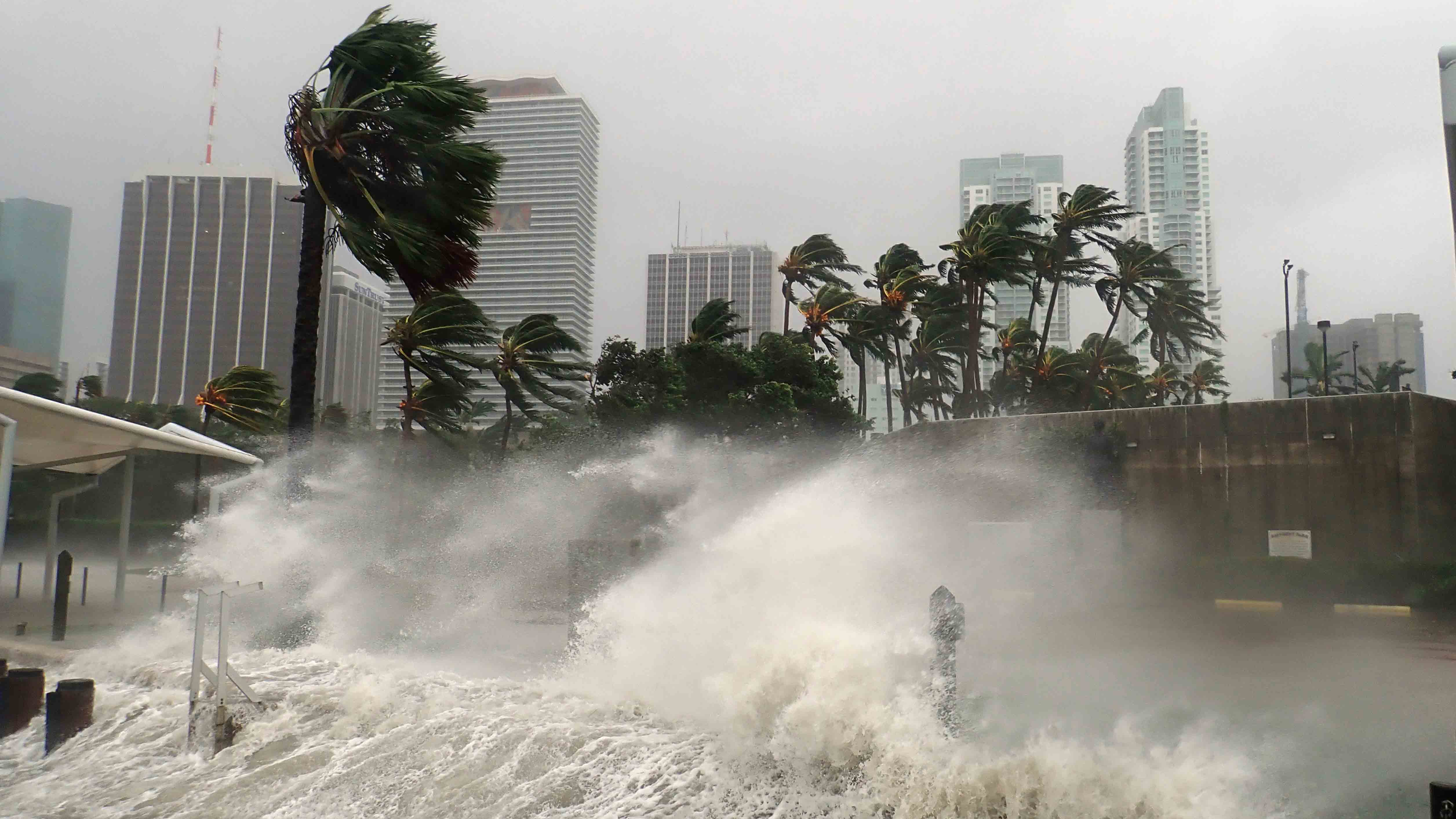 Looking to Relocate? Plan for Climate Change
Looking to Relocate? Plan for Climate Changebuying a home Extreme weather events are on the rise. If you’re moving, make sure your new home is protected from climate change disasters.
By Rivan V. Stinson Last updated
-
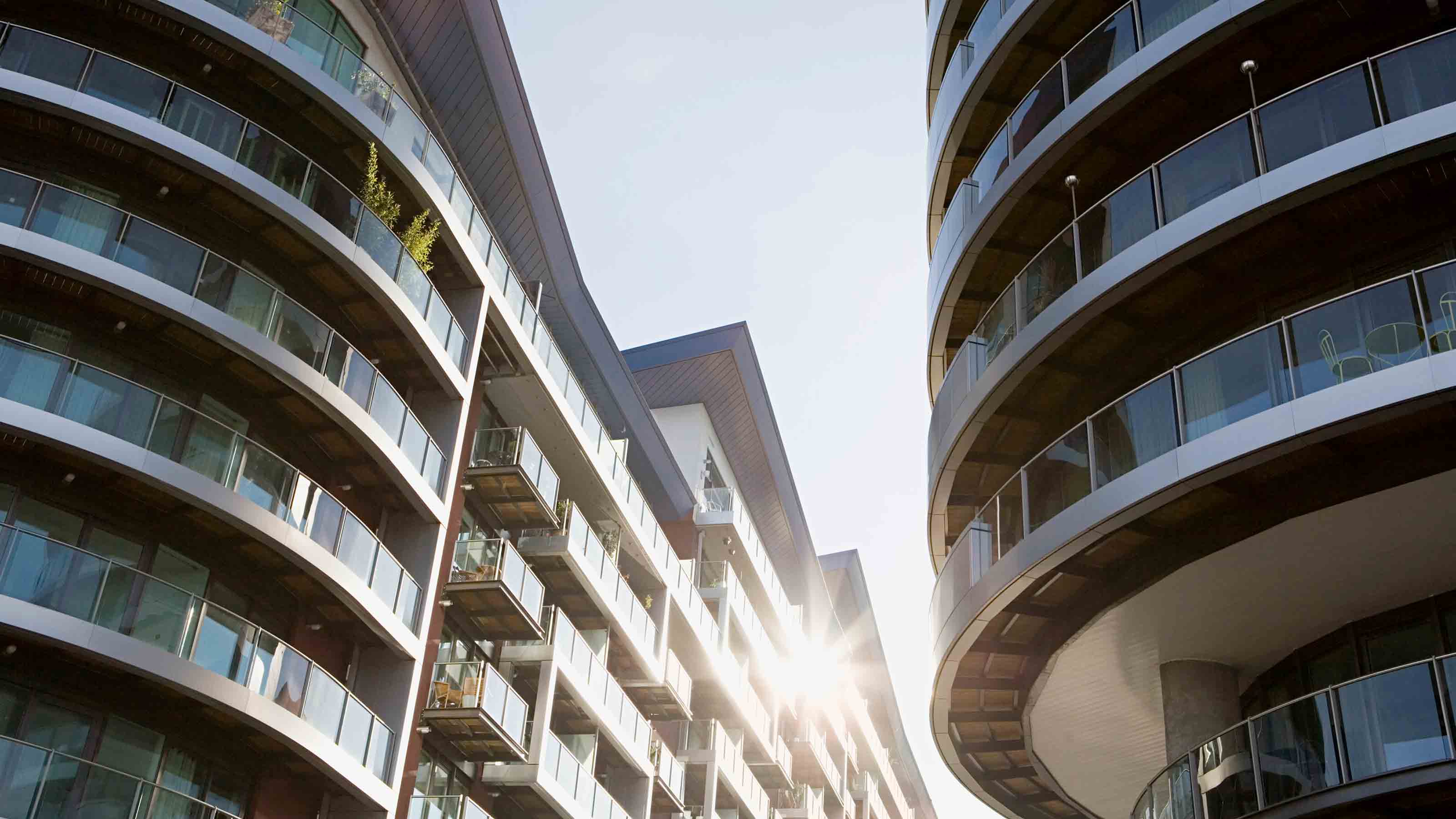 Retirees, A Healthy Condo Has a Flush Reserve Fund
Retirees, A Healthy Condo Has a Flush Reserve FundSmart Buying Reserve funds for a third of homeowner and condo associations have insufficient cash, experts say. Here are some cautionary steps you should take.
By Patricia Mertz Esswein Published
-
 Cash Home Buyers: New Services Offer Help Making All-Cash Offers
Cash Home Buyers: New Services Offer Help Making All-Cash OffersBecoming a Homeowner Some firms help home buyers make all-cash offers on homes. Weigh the fees before you sign on.
By Emma Patch Published
-
 Home Sale Prices in the 50 Largest Metro Areas
Home Sale Prices in the 50 Largest Metro AreasBecoming a Homeowner What’s happening in the market where you live?
By the editors of Kiplinger's Personal Finance Published